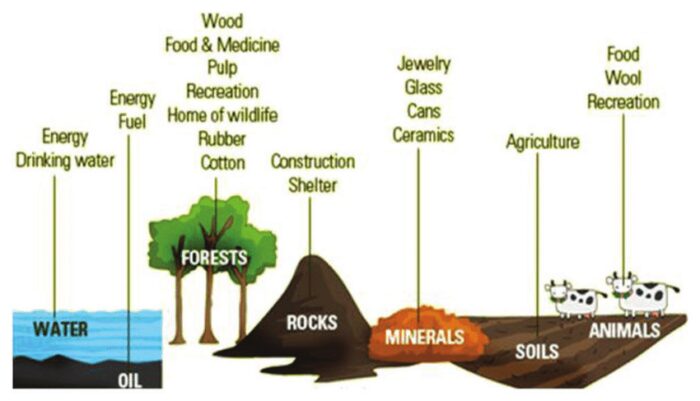
Renewable energy stands out as the beacon of sustainable power, and solar power is at its forefront. This article examines why this form of energy is classified as renewable and explores its environmental advantages.
The Nature of Renewable Resources
Renewable resources are those that replenish naturally over time. The key characteristic separating them from non-renewable sources is the sustainability of solar energy. Fossil fuels, for example, take millions of years to form and are thus considered non-renewable. In contrast, solar power, harnessed from the sun, is inexhaustible in human terms. The sun, a colossal fusion reactor, generates energy that reaches Earth continuously. This flow of power will last for billions of years, far beyond human timeframes, making it a quintessential renewable resource.

How Solar Power Works
To appreciate the renewable nature of solar power, it’s essential to understand how it’s harnessed. Photovoltaic cells, commonly seen on rooftops or solar farms, convert sunlight directly into electricity. These cells contain materials like silicon, which absorb photons from sunlight and release electrons. These free electrons flow through the material, generating an electric current. This process, known as the photovoltaic effect, is the cornerstone of solar technology. Importantly, this conversion involves no moving parts, burning, or emission of greenhouse gases, distinguishing it from fossil-fuel-based methods.
The Sun’s Limitless Supply
The sun emits vast amounts of energy every second, far exceeding global energy demands. It’s estimated that in just one hour, the sun bathes the Earth in more energy than humanity consumes in a year. This immense and continuous supply underlines why solar power is considered inexhaustible. Unlike fossil fuels, which are being depleted at an alarming rate, the sun’s energy output remains constant and overwhelmingly abundant.
Environmental Impacts and Benefits
The environmental benefits of harnessing the sun’s energy are significant. Unlike fossil fuels, which release harmful pollutants and greenhouse gases, solar power is clean and green. The process of converting sunlight into electricity produces no emissions, air pollution, or water pollution. This makes it an environmentally friendly alternative, crucial in the fight against climate change and global warming. By reducing reliance on fossil fuels, countries can lower their carbon footprints, thereby contributing to a healthier planet.

The Role in Sustainable Development
Sustainable development aims to meet present needs without compromising future generations. Solar power plays a crucial role in this. By providing a clean, renewable source of energy, it supports economic growth while protecting the environment. The technology also creates jobs in manufacturing, installation, and maintenance, contributing to economic prosperity. Moreover, solar installations can be deployed in remote locations, providing energy to communities that lack access to traditional power grids.
Integration into the Global Energy Mix
As the world seeks to reduce its carbon footprint, integrating solar power into the global energy mix is essential. This integration involves transitioning from traditional energy sources to a more diverse portfolio that includes substantial solar input. The adaptability of this technology, from small-scale rooftop installations to large solar farms, makes it suitable for a wide range of applications. Additionally, the advancement in technology has enabled its pairing with other renewable sources, like wind and hydropower, creating hybrid systems that are more efficient and reliable.
Economic Viability and Cost Trends
The economic aspect of solar power has seen a transformative change over the past few decades. Initially considered expensive, the cost of solar panels and related technology has plummeted, making it increasingly competitive with conventional energy sources. This price reduction is due to technological advancements, increased production scales, and improved materials. The economic viability of solar power is not just in the cost of production but also in the long-term savings it offers consumers and the broader economic benefits of job creation in the renewable sector.

Technological Innovations and Efficiency
Technological innovations continue to enhance the efficiency and functionality of solar systems. Advances in photovoltaic materials, such as perovskites, have shown potential for higher efficiency rates and lower production costs. Innovations in storage technology, like lithium-ion batteries, are addressing the intermittency challenge. Furthermore, developments in solar panel design, including bifacial panels and tracking systems, maximize energy capture. These technological strides are pivotal in improving the efficiency and deployment of solar power systems.
Policy and Regulatory Frameworks
The growth of solar power is also influenced by policy and regulatory frameworks. Governments around the world are implementing policies to promote renewable energy, including tax incentives, subsidies, and renewable energy targets. These policies are crucial in creating a conducive environment for the growth of solar power. Additionally, regulatory frameworks are needed to ensure fair access to the grid, manage subsidies, and oversee the integration of solar power into the existing energy infrastructure.
The Role of Public Awareness and Education
Public awareness and education play a vital role in the adoption of solar power. Understanding the benefits of solar energy, along with knowledge of available incentives and installation processes, can significantly influence public acceptance and adoption rates. Educational campaigns, community programs, and transparent information dissemination are critical in demystifying solar technology and encouraging its widespread use.

Solar Power as Key Player in a Greener Future
In summary, the renewable nature of solar power, combined with its environmental and economic benefits, positions it as a key player in the transition to a greener, more sustainable future. While challenges exist, continued technological innovation, supportive policies, and increasing public awareness are paving the way for a brighter, cleaner future powered by the sun. The journey toward renewable energy is not just about technology but a collective move towards a sustainable and environmentally conscious world.
Summary
The exploration of solar power as a renewable energy source highlights its vital role in shaping a sustainable future. With its endless supply, environmental benefits, and evolving technological landscape, it stands at the forefront of the renewable energy revolution. As the world grapples with climate change and the need for sustainable development, the sun’s energy offers a path forward, promising a cleaner, greener, and more prosperous world for generations to come.











